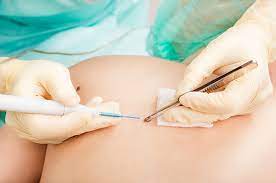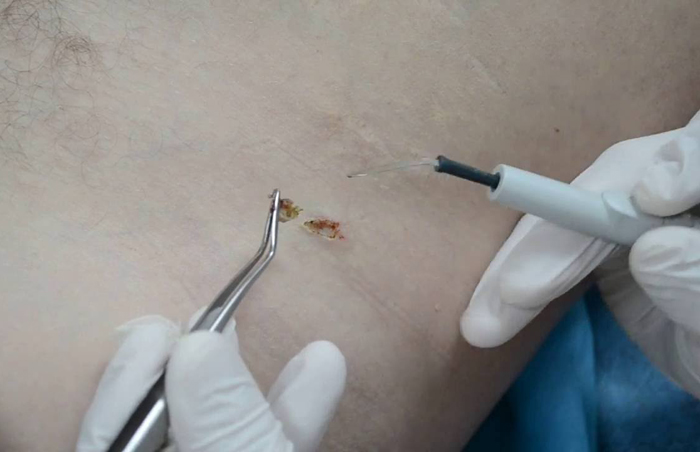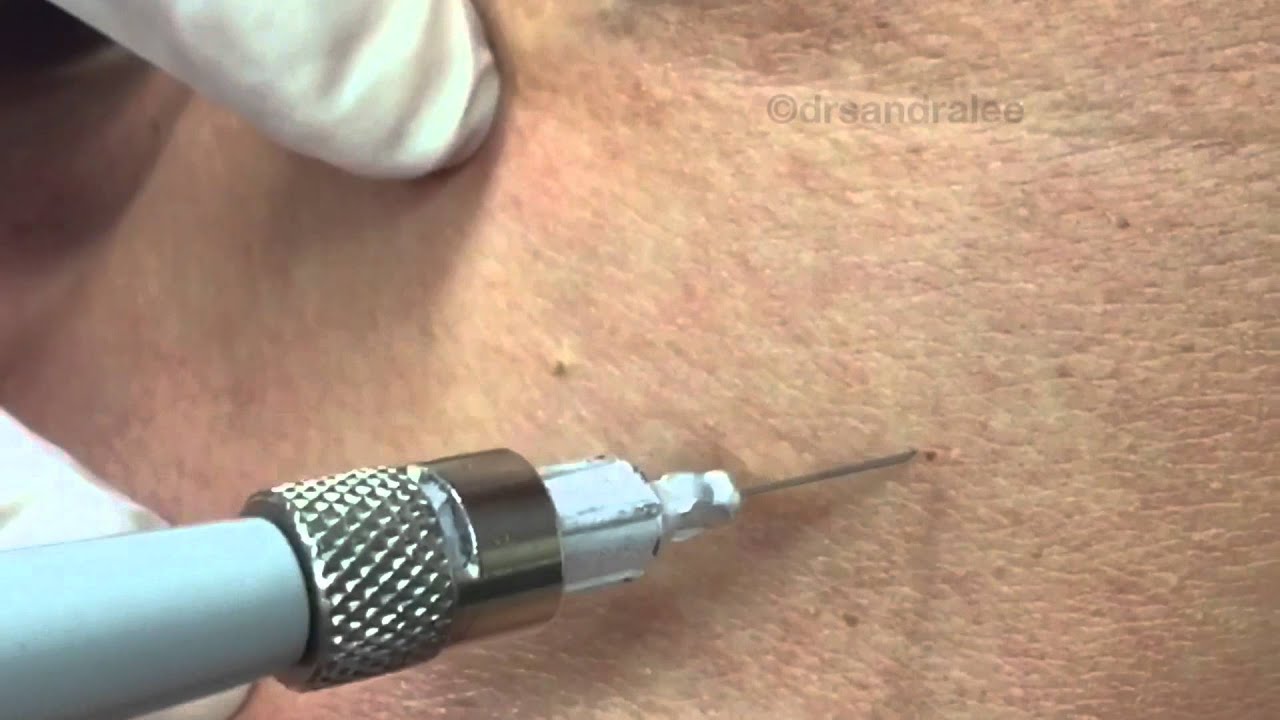Electrocautery
Electrocautery
Electrocautery, also known as thermal cautery, refers to a process in which a direct or alternating current is passed through a resistant metal wire electrode, generating heat. The heated electrode is then applied to living tissue to achieve hemostasis or varying degrees of tissue destruction. [1] Electrocautery can be used in various minor surgical procedures in dermatology, ophthalmology, otolaryngology, plastic surgery, and urology.
In electrocautery, the current does not pass through the patient; thus, the procedure can be safely used in patients with implanted electrical devices such as cardiac pacemakers, implantable cardioverter-defibrillators, and deep-brain stimulators.


Basic Physics Terminology
-
Voltage (volts): force that pushes the current (“Potential
Energy”).
- – More force = more destruction
-
Resistance (ohm): quality of tissue that impedes flow of
current.
- More resistance = less current flow.
- Resistance of skin > bone > fat > muscle > bowel wall (326 ohms) > blood.
- Intensity (amps): amount of electricity crossing an area (wire), per second.
- Current Density (amp/cm 2): amount of current flowing through a cross sectional area = Current Intensity(amps)/area(cm2)
risks of electrocauterization
The treatment itself has minimal risks. Risks of electrocauterization may include:
- slight bleeding
- infection; your doctor may give you antibiotics to reduce this risk
- pain or mild discomfort; your doctor may prescribe you pain medication for after the procedure
Tell your doctor if you have a pacemaker or prosthetic joint before undergoing this treatment.

Make an Appointment
Book your appointment today for a personalized consultation. Whether you're interested in PRP treatment or other hair restoration solutions, our expert team is here to guide you through the process. Let's discuss how we can help you achieve your desired results.
Frequently Asked Questions
Hair restoration and PRP therapy can raise many common concerns among our clients. Below, we’ve compiled answers to frequently asked questions to help you better understand the PRP hair treatment process, its benefits, and what to expect during your journey to healthier hair. If you have any additional questions, feel free to contact our specialists.
-
What is PRP hair
treatment and how does it work?
PRP (Platelet-Rich Plasma) therapy involves drawing a small amount of your blood, processing it to extract the platelet-rich plasma, and injecting it into your scalp. The platelets release growth factors that stimulate hair follicles, promoting natural hair growth and improving hair thickness.
-
How
long does it take to see results from PRP hair treatment?
Most patients begin to see noticeable improvements within 3-6 months after starting PRP therapy. However, the timeline can vary based on individual hair growth cycles and the severity of hair thinning.
-
Is
PRP treatment painful?
The procedure involves minor discomfort since it uses small injections into the scalp. Most patients find the pain tolerable, and a numbing cream is often applied beforehand to minimize any discomfort.
-
How
many PRP sessions will I need?
Typically, a series of 3-4 sessions spaced 4-6 weeks apart is recommended to achieve optimal results. After the initial treatments, maintenance sessions every 6-12 months may be suggested to sustain hair growth.
-
Are
there any side effects of PRP hair treatment?
PRP treatment uses your own blood, so the risk of adverse reactions is minimal. Some mild swelling, redness, or tenderness at the injection site may occur but typically resolves within a few days.





